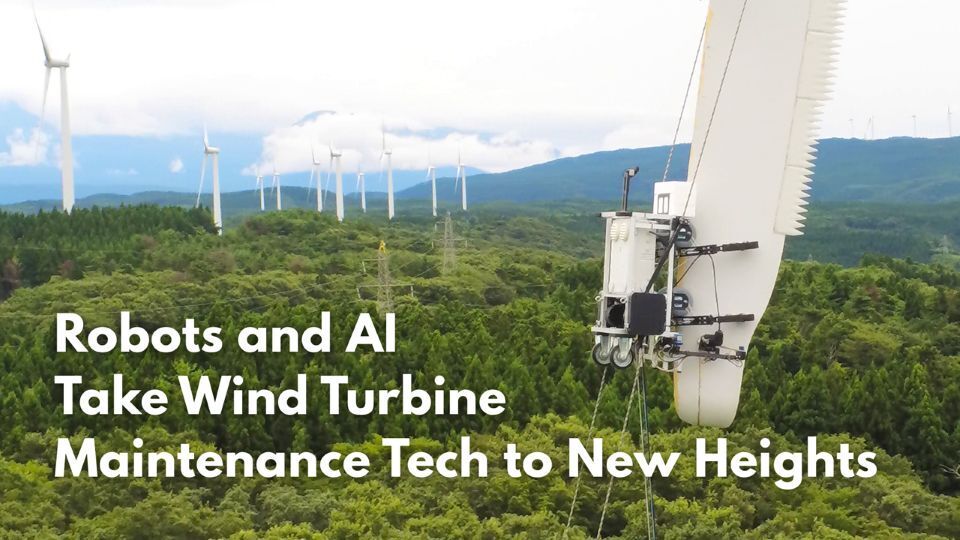Localized heavy rains and tornadoes have been wreaking global havoc in recent years. One Japanese company has risen to the challenge of developing innovative technology to predict these potential disasters in advance and allow the implementation of preventive measures. What makes the compact weather radar system developed by Furuno Electric Co., Ltd. such a significant contribution to the world?
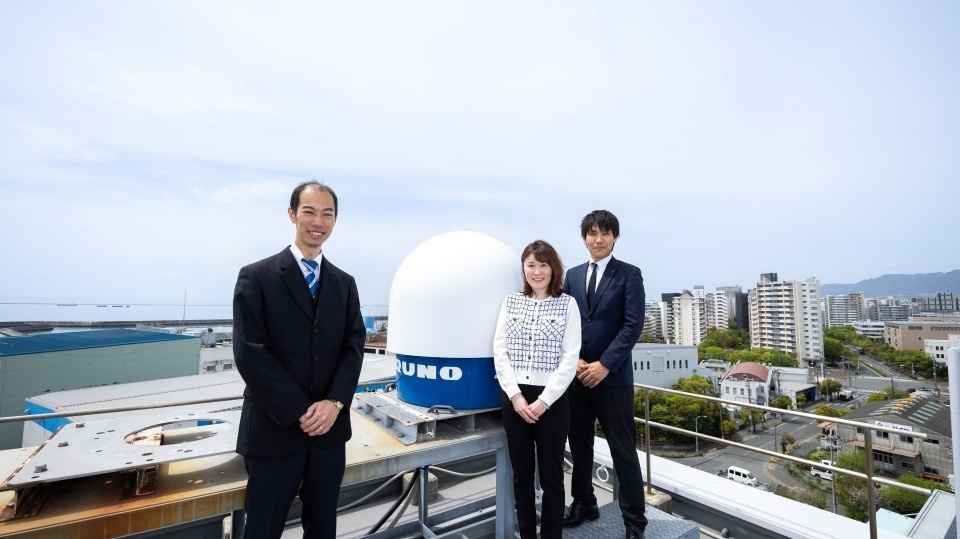
From left to right: MINOWA Masahiro of the Research and Innovation Center, TAKASHIMA Megumi of the Product Planning Section, and NOGUCHI Ryutaro of the Brand Communication Section of Furuno Electric Co., Ltd., with the company’s compact weather radar.
Climate change has triggered more frequent localized natural disasters worldwide. Calamitous events like flash floods and tornadoes occur suddenly in very specific areas, making them difficult to predict with conventional large-scale weather radar systems that monitor rain clouds over broader regions and at higher altitudes. Japanese electronics manufacturer Furuno Electric Co., Ltd. has tackled this challenge by developing one of the world’s smallest and lightest weather radars—measuring just 1 meter in both diameter and height, and weighing only 65 kg—to improve disaster prediction capabilities.
This compact weather radar requires minimal effort to transport and install, and it can be placed in narrow or low-lying spaces that were previously difficult to utilize, such as building rooftops or mountain valleys. This adaptability enables it to detect rain clouds in localized areas and at low altitudes (500–2,000 meters), providing highly accurate forecasts of when, where, and how much rain will fall in the near future.
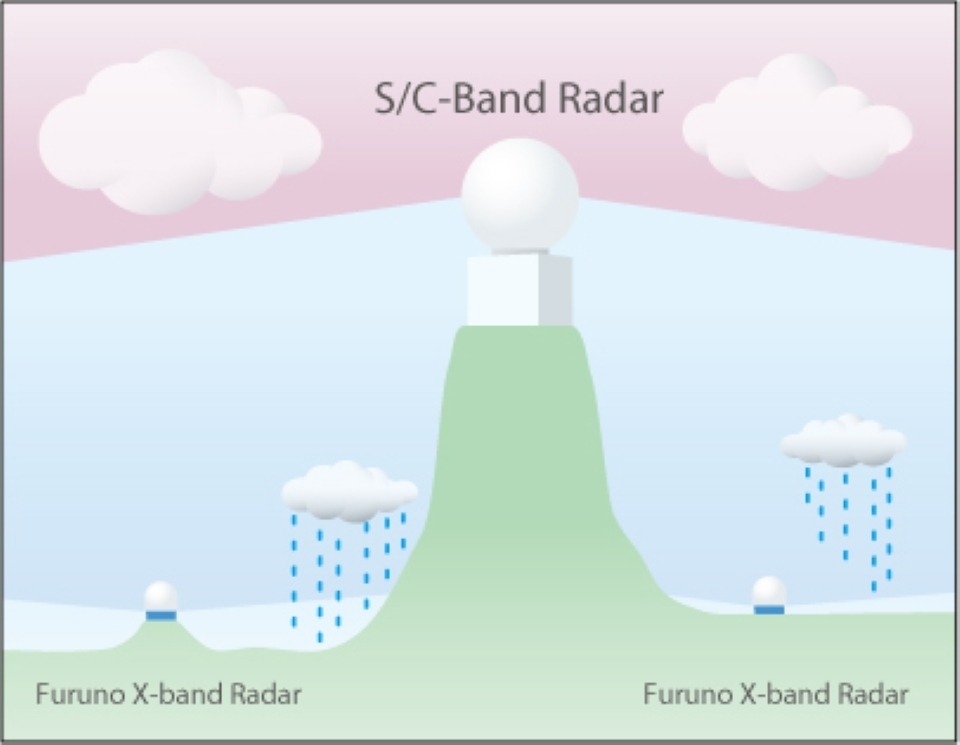
A compact weather radar system can detect low-altitude rain and snow clouds that would be missed by conventional large-scale radar systems, which primarily monitor higher altitudes across wide areas.
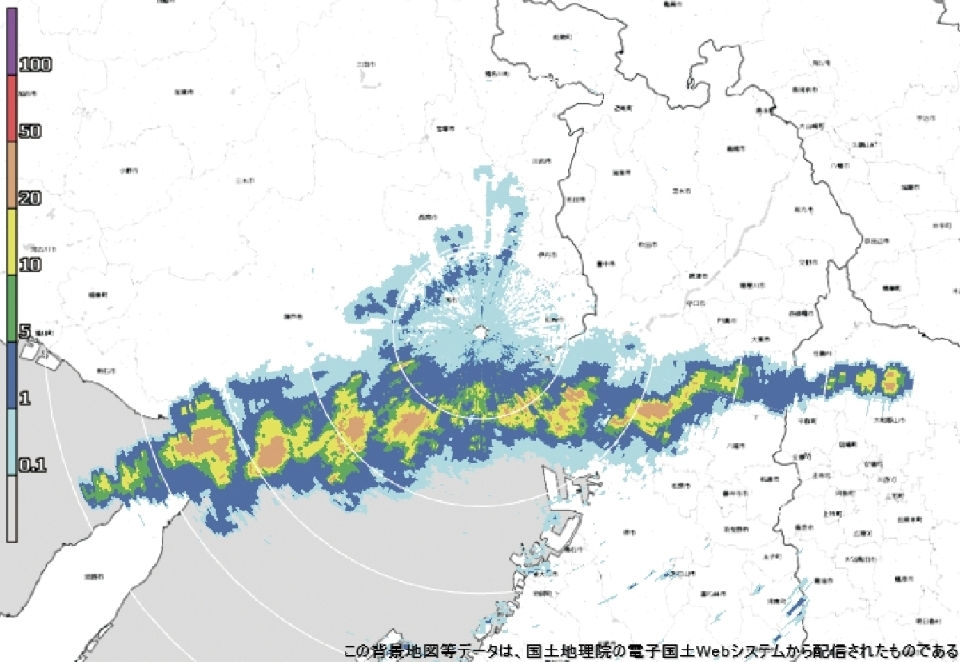
Radar image showing a linear band of localized heavy rainfall observed in the Kobe–Osaka area.
Originally, Furuno was a business that provided equipment and services for maritime vessels and industrial applications. In 1948, it successfully commercialized the world’s first fish finder, and has since established a dominant presence in the maritime sector with products including commercial vessel radar and electronic equipment for fishing boats. For this company, whose field of expertise might at first glance seem unrelated to meteorology, the catalyst for deep involvement in disaster prediction was a tragedy that occurred close to home.
In July 2008, the Togagawa River in Kobe City suddenly flooded after intense rainfall, sweeping away sixteen people and killing five. Following this disaster, Professor OISHI Satoru of Kobe University’s Research Center for Urban Safety and Security approached Furuno, based in nearby Nishinomiya, with a proposal: “Let’s improve disaster prevention through localized weather observation.” Though weather radar development was entirely new territory for Furuno, the project leaders were confident that the company’s existing radar expertise would prove invaluable for this life-saving application.
MINOWA Masahiro, Director of Furuno’s Research and Innovation Center, explains the reason for this confidence: “Rain has always appeared in marine radar images. Since the purpose of marine radar is to detect land and other vessels, rain was considered a nuisance. But we thought that if we could eliminate land and ship images through signal processing, we should be able to create a radar that captures only rainfall.”
By leveraging this reverse thinking, Furuno successfully commercialized its first compact weather radar in 2013. Since then, the radar has been adopted by local governments and research institutions that favor its easy transportation, simple installation, and affordable price. Now, with some 150 units installed in 33 countries, its reach extends far beyond Japan.

Furuno’s weather radar installed at the Milešovka Observatory of the Czech Academy of Sciences in the Czech Republic.
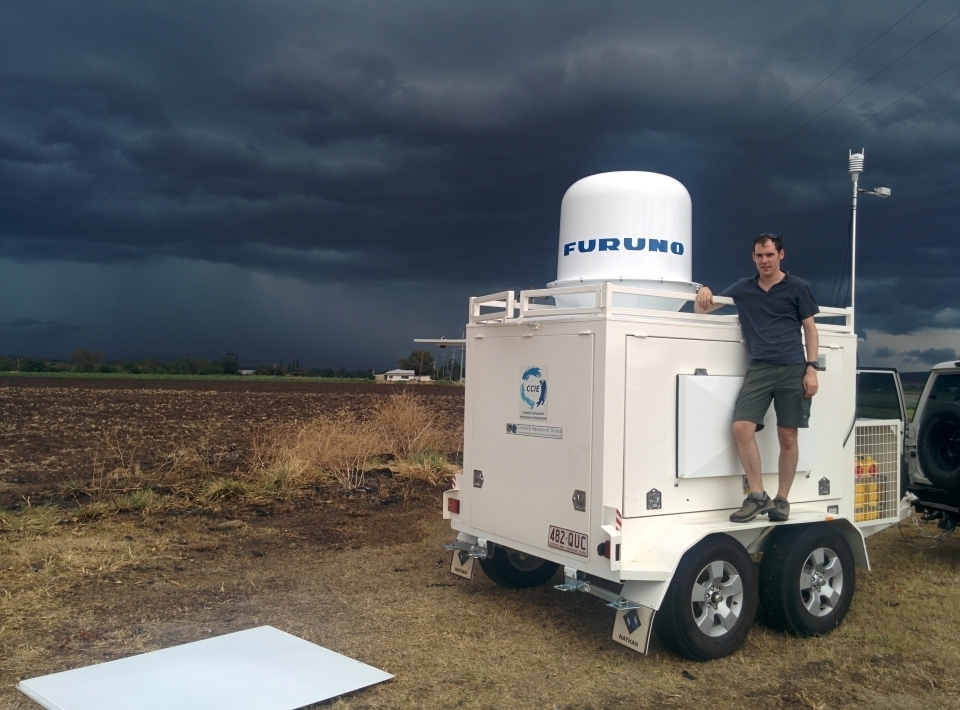
In Australia, large-scale wildfires are a nationwide concern. Researchers at the University of Queensland have mounted Furuno’s weather radar on mobile observation vehicles to study and predict the direction in which wildfires will spread.
The radar’s uses vary from country to country. In Singapore, rainfall observations from compact weather radar systems are combined with sewage runoff models to predict and manage the risk of urban flooding. Meanwhile, in Australia, where large-scale wildfires have become a critical problem, the radar is being used to predict the direction of fire spread by observing high-temperature updrafts. These previously unanticipated applications demonstrate the broad potential of compact radar systems.
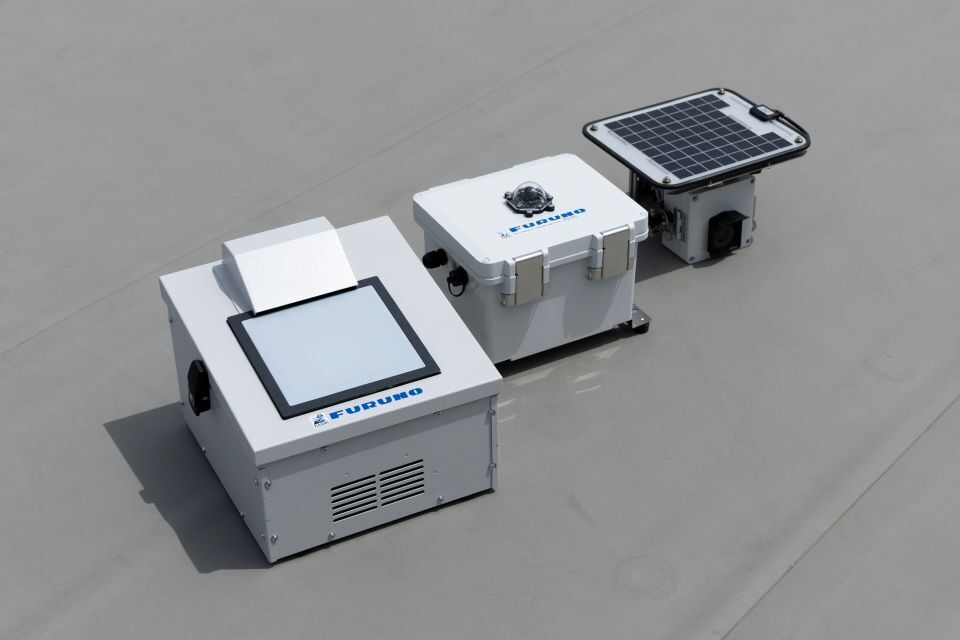
Three of the meteorological observation devices currently under development at Furuno are a microwave radiometer for measuring water vapor (left), a camera for capturing full-sky cloud images (center), and a camera for monitoring river levels (right).
Regarding future developments, Director Minowa explains: “We are currently developing related equipment, including microwave radiometers that observe atmospheric water vapor, cameras that capture full-sky images of clouds, and cameras that can remotely monitor rising river levels. By combining all of these with our weather radar, we can comprehensively observe the development of downpours from the water vapor stage, before rain clouds form, all the way to river flooding. By providing these localized weather prediction solutions to the world, we hope to contribute to the creation of a safer society.”





























